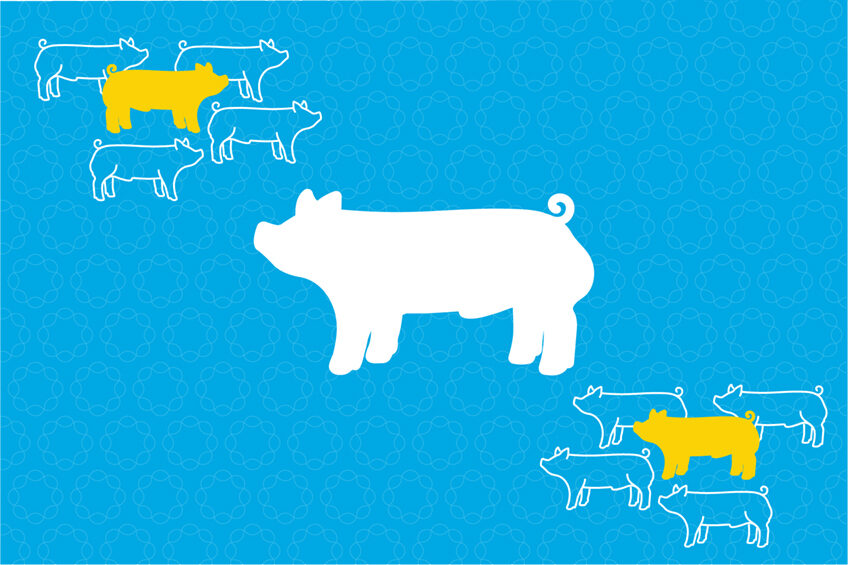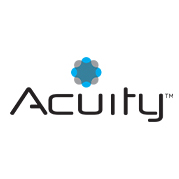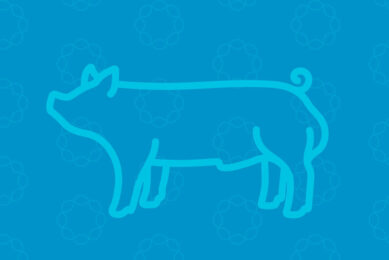Real-world data produces stronger genetics

In some of the popular virtual reality video games, players use their skills to build houses and even cities from scratch. Some of these simulators mirror real life, with the ability to see how one decision impacts the next. Can a similar simulation be applied to the pork industry? It can and it does, but with real pigs in real commercial settings.
Acuity puts its genetics research to the test in its Commercial Test Herd (CTH) programme. The programme tests farm-level pork production to identify what genetic traits, fertility tendencies, housing, nutrition and other factors contribute to higher value pigs. But unlike games such as SimCity, where success is far from certain, the CTH consistently produces swine genetics proven to work in our customers’ farms.
The research model dates back to 2003 when Acuity’s parent company, The Maschhoffs, began evaluating pig genetics within hog operations. The approach evolved into the CTH in 2016. The Maschhoffs spun Acuity off into a stand-alone company in 2020.
The Acuity Differentiator
Dr Justin Fix, Acuity’s director of business development and genetic improvement, says the company’s research is predicated on ensuring predictable performance. Or what he calls “The Acuity Differentiator.”
“When The Maschhoffs were researching profit differentiators, feed, nutrition and health were all variables evaluated, but it all starts with genetic potential,” Fix says. “After 15-plus years of research and development, we’re confident in the genetic base we’re building.”
“Using commercially relevant data — tested in a true commercial barn — allows us to better understand the performance potential of sires which, in turn, allows commercial producers to make more informed decisions to deliver and realise genetic progress in their herds.”
Scale and precision
Genetics testing conducted in commercial settings is nothing new. The difference here is that Acuity is able to test with a research and development platform at a scale and precision that other commercial testing programmes do not.
It starts with understanding how value is created from the boar stud through the packing plant. The CTH programme is in technology centres at Acuity partner farms. Tech centres are set up like conventional production sites, then modified to facilitate the capture of large data sets collected from the animals. The data sets run the gamut from reproduction to growth curves, to identify ways pigs perform in commercially relevant production environments.
Acuity researchers leave no stone unturned. For instance, adjustment gates are added to the back of each pen to enable consistent floor space through the entire wean-to-finish production phase. Feed systems are in place that blend and measure batches of feed for every pen.
The method and analytics go deeper than smaller institutional research. “We want to know how we can collect data that allows us to improve boar fertility; increase quality pigs weaned; reduce mortality and morbidity in the nursery; drive a higher percentage of grade A market pigs; increase lean yield; and improve pork quality,” Fix says.
Selecting boars for future generations
Whether it is Acuity’s ability to capture pen intake by sire, individual boar fertility, or a sire’s percent grade A pigs, leveraging 500+ offspring per sire to understand differences allows Acuity to select boars for future generations that will generate more value for commercial customers.
“Our approach creates a different value proposition for the industry,” Fix says. “And in the end, we are here to generate more profit potential, that is more readily achievable in our producers’ system, and we believe that the Acuity Commercial Test Herd is a pillar to deliver just that.”
 Beheer
Beheer



 WP Admin
WP Admin  Bewerk bericht
Bewerk bericht